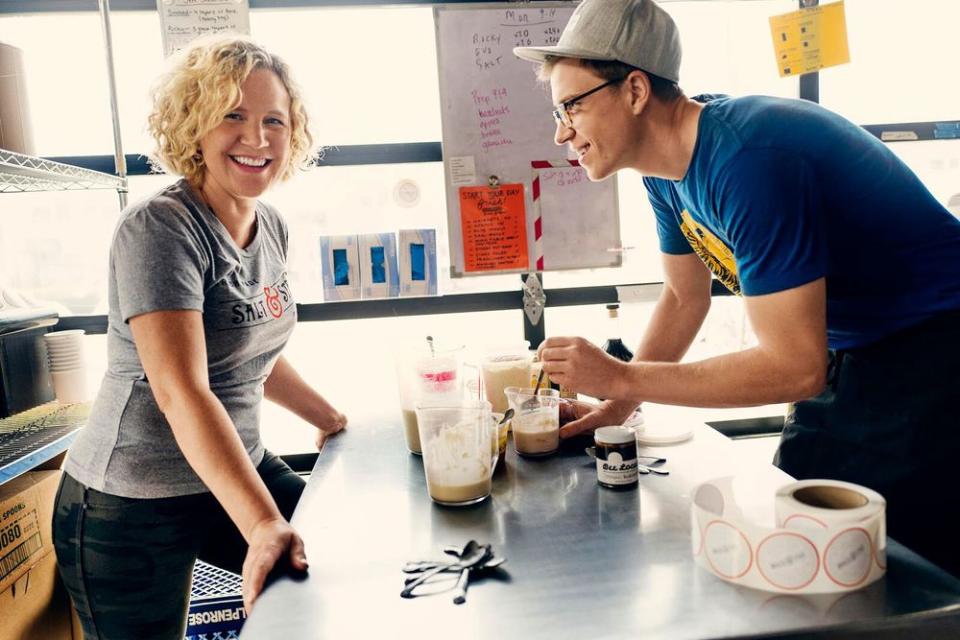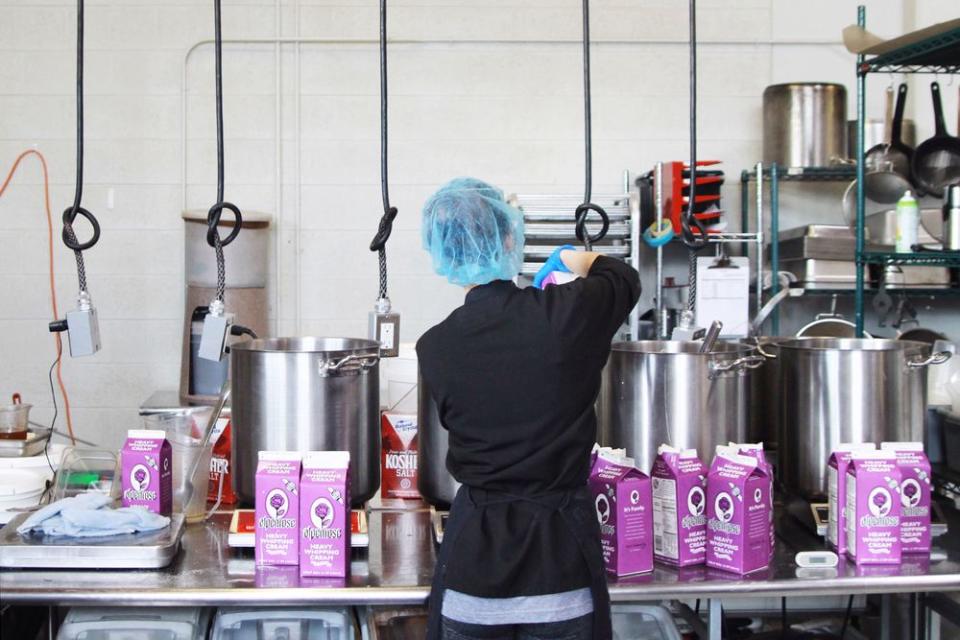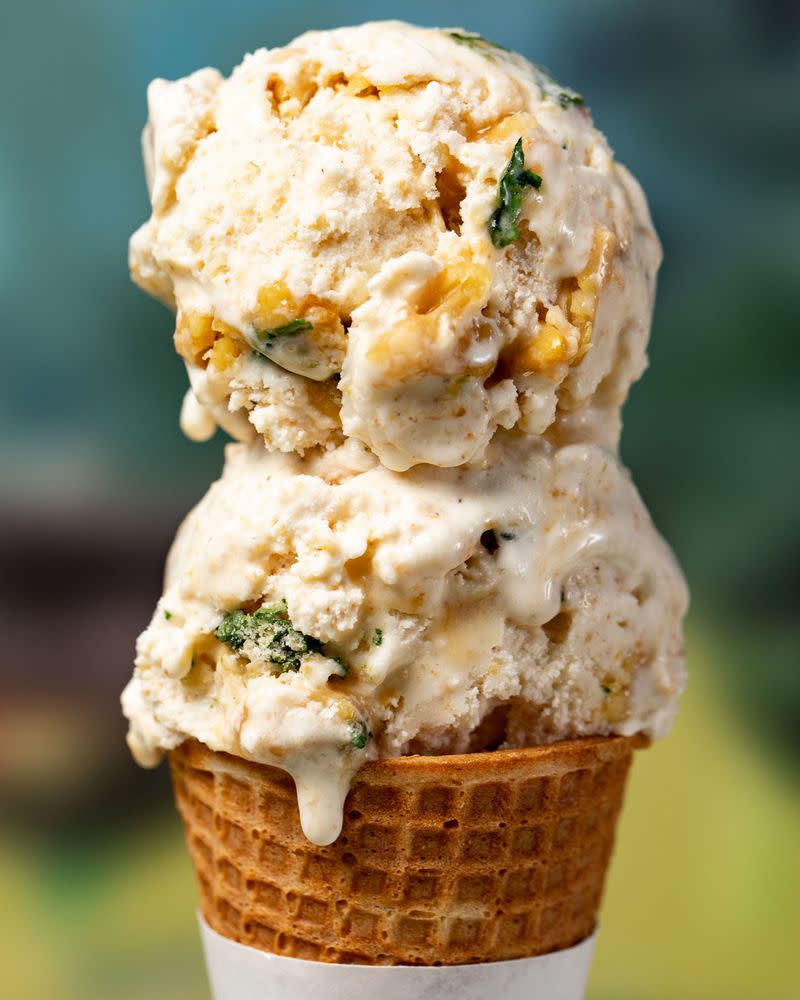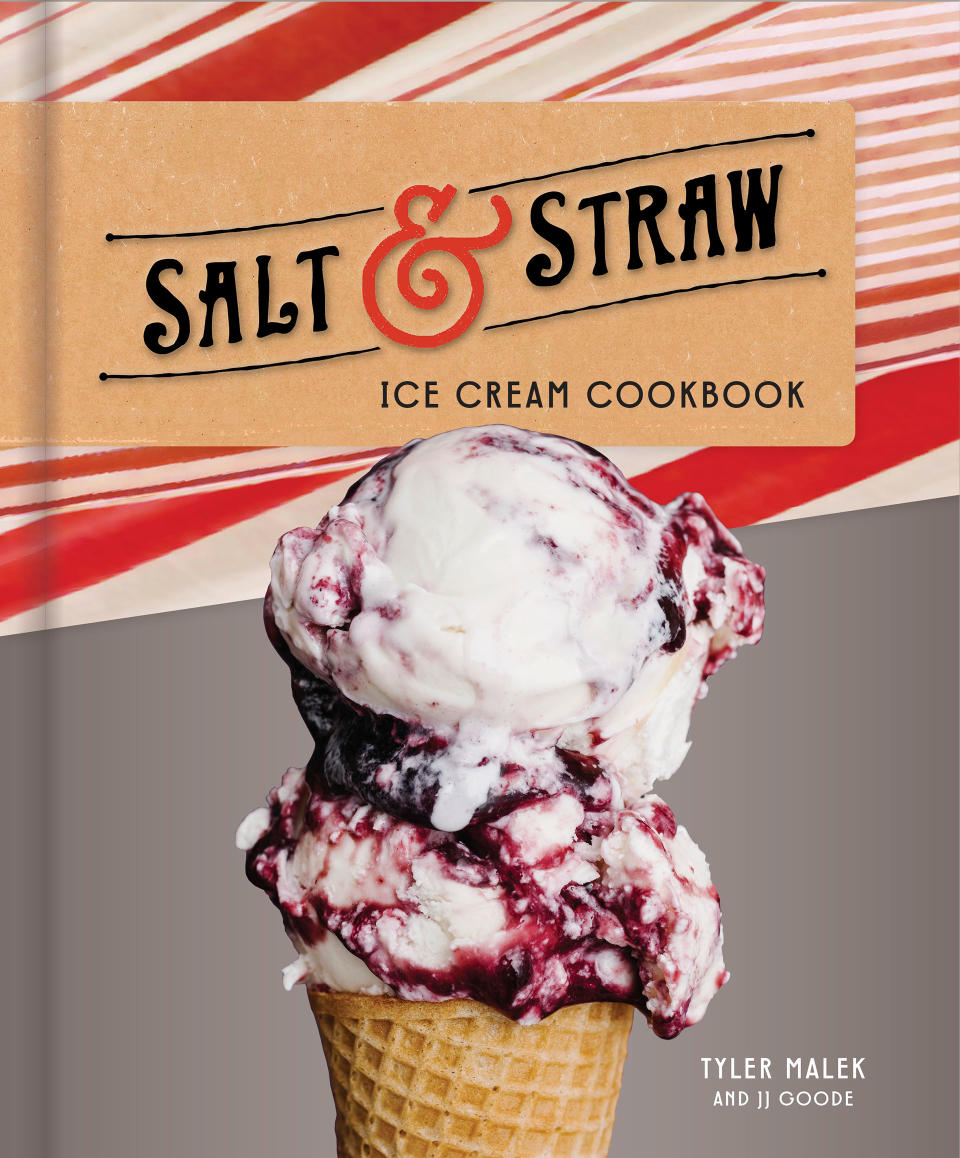Foraging for Ice Cream With West Coast Wunderkind Salt & Straw

At 9 a.m. on a spring Monday, a few employees are milling around Salt & Straw’s Seattle ice cream parlor. No, breakfast ice cream isn’t some new trend. (Although one of the employees does serve herself an early scoop.)
They’re gathering here before heading out to forage ingredients for the June slate of flavors—particularly the Seattle-exclusive Skillet Cornbread with candied nettles and pine nut. Each of the 8-year-old, Portland, Ore.-based company’s locations has conducted similar trips: looking for wild herbs in Ojai, Calif.; mushrooms in Astoria, Ore.; California juniper in the Yucca Valley; and seaweed in Bodega Bay, Calif.
“I think of it as a magazine,” explains co-founder and owner Tyler Malek, on how he determines the five original flavors rotating around the menu each month. In the past, they’ve incorporated flowers, beer, and artisan chocolates into bespoke ice cream flavors. For this June, Malek and his team channeled the quintessential 1980s camping trip—station wagon and all—asking, “How do we tell a story about getting outside and seeing the ingredients around you?”

The answer is that you bring the team into the woods. On this particular occasion, the Salt & Straw team is venturing out with forager and food writer Langdon Cook, who demonstrates not just how to pick the nettles, but also pointing out vanilla leaf that can be dried and extracted, the bizarre flavor of licorice fern root, and tart oxalis leaves that we all but trip over on the way from the parking lot to the trailhead.
As we tramp across the wet paths, pausing to scan the lush forest floor for food, Malek explains that we’re not out here because he thinks stinging nettles are somehow going to become a best-selling ice cream. “We call them experiential flavors,” he says. The camping-themed menu, for which we’re picking, includes Campfire S’mores with pop rocks, pine needle infusion, and smoked sugar; Buttermilk Pancakes and Eggs, featuring ribbons of scrambled egg caramel; and vegan Berries, Beans, and BBQ sauce.
Instead of aiming for the crowd-pleasers, Malek frees himself and his team to get creative, to let the flavors drive the story—for that imaginary magazine—and not always be trying to hit a home run. “Ice cream has the cool opportunity to take people on an exploration,” says Malek, and he’s careful not to let a short-term bottom line prevent that.

It helps that ice cream is extremely approachable. It’s a blank canvas for flavors. And it’s almost universally beloved. Salt & Straw’s ice cream base is made in 5-gallon batches from local ingredients, the richness is incomparable, and the texture is butter-smooth. (It helps, so to speak, that it’s high in butterfat.)
Scoop shops are also one of the only restaurant types where customers can sample all the options before they pick what to buy—unlike, say, wavering on trying the new tripe dish at a local bistro. Malek encourages customers to slow down and taste through the menu, to let his creations—such as Beecher’s cheese with peppercorn toffee or Arbequina olive oil—start conversations.
For the June flavor series, Malek says he aims to produce ice cream flavors that would spark discussions about foraged foods. “If one kid learns that you can eat food from the forest” by stepping into a Salt & Straw location this June, Malek says he will be using his platform as intended.

Creating flavors that might not be top sellers wasn’t exactly Malek’s plan when he went into business with his cousin Kim Malek as a side project during culinary school. While the rotating menu takes the concept of a magazine, on April 30, the Salt & Straw Ice Cream Cookbook comes out—an actual book. Inside, the cookbook tells the story of how the pair launched what they thought would be a single, small, quirky ice cream shop. It eventually became heralded as one of the most innovate ice cream makers in the country.
Kim Malek, previously a director at Starbucks, saw the business as a safe, comfortable space where customers could feel taken care of as well as meet some of the people who grew and produced the ingredients that they made into ice cream. Tyler Malek, a former tour guide with a degree in Chinese, saw ice cream as a path to a journey. Today, the shops are a combination of the two visions, and the book chronicles—in words and recipes—how they got there.

The cookbook, published by Clarkson Potter, also chronicles how this small business took to spotlighting local producers through the rotating flavor series, starting with Malek’s first themed menu, in which he created ice creams using beer-brewing elements. The book opens with basic elements, like how to roast strawberries for stronger flavor. It progresses quickly, launching into instructions on how to ferment lactobacillus yeast for the hopped farmhouse ale. The book vacillates back and forth between approachable (ice cream infused with fellow Portland-based Stumptown Coffee) and Grandma Dracula’s Blood Pudding, made with real pig’s blood.
But more than anything, Malek says he aimed to create a guide to experimenting with frozen flavors. “Ice cream is like soup,” he says of the process, in that you start with stock, and then you can blend this and chop that, but no matter what, you end up with soup at the end. Similarly, whether he’s sprinkling on local sea salt, chopping up sea urchin, blending fresh mountain berries, or stirring in chocolate-covered crickets, Malek is making ice cream—and simultaneously removing the boundaries around how ice cream can be made.
